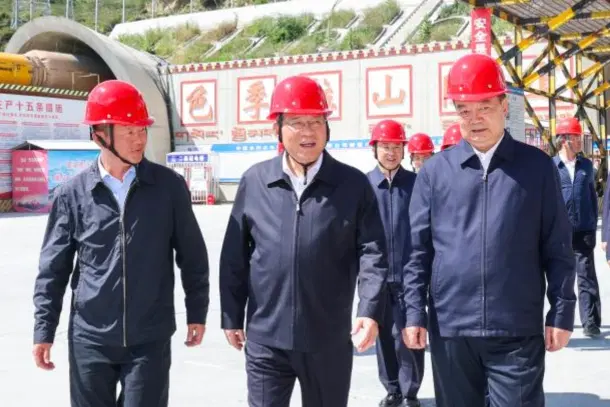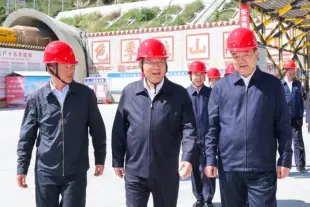News Brief
China Launches Construction On $167 Billion Mega Dam On Brahmaputra Near Arunachal—Here’s Why It Worries India
Swarajya Staff
Jul 20, 2025, 01:26 PM | Updated 01:26 PM IST
Save & read from anywhere!
Bookmark stories for easy access on any device or the Swarajya app.


China on Saturday (19 July launched the construction on a massive $167.8 billion hydropower project on the Brahmaputra River in Tibet, near the Indian state of Arunachal Pradesh, India Today reported.
Chinese Premier Li Qiang announced the project’s commencement at a groundbreaking ceremony in Nyingchi City, located in the lower reaches of the Brahmaputra river, which is locally known as the Yarlung Zangbo.
Sanctioned in December 2024, the project is dubbed the world’s biggest hydropower infrastructure.
The massive hydropower complex will consist of five cascade power stations, with a total investment estimated at 1.2 trillion yuan (approximately $167.8 billion).
Beijing first announced plans for the dam in 2020 under its five-year plan, as part of a broader strategy to exploit the hydropower potential of the Tibetan Plateau. The plan was approved last December.
When completed, the project is expected to generate 300 billion kilowatt-hours of electricity annually—sufficient to provide power to over 300 million people.
The project will be built at the Great Bend in the Himalayas, where the Brahmaputra turns sharply before entering Arunachal Pradesh and then eventually into Bangladesh.
The massive project has raised concerns in India and Bangladesh, both of which are downstream countries.
The site of the project is sensitive to its proximity to the India-China border and it being in a seismically active zone.
India had earlier urged China to ensure that its upstream activities do not harm downstream interests.
In response, Beijing stated that the dam would not cause any "negative impact" and affirmed its commitment to ongoing communication with lower riparian countries.
In June, Arunachal Pradesh Chief Minister Pema Khandu also warned that China’s mega-dam near the border poses a serious threat, calling it a “ticking water bomb.”
He said it could endanger local tribes and livelihoods, and may be an even bigger concern than the military threat, as China "cannot be trusted" and could use the dam as a weapon.
There are also worries about population displacement and major environmental disruption, as well as potential weaponisation of water by China, which could use the dam to cause floods or induce droughts.
According to a Xinhua report, Chinese premier LI described the Yarlung Zangbo hydropower project as a project of the century and called for the adoption of advanced technologies, equipment, techniques, and materials to provide robust support for high-quality construction of the project.
He also noted that special emphasis must be placed on ecological conservation to prevent environmental damage, and urged efforts to build the project into a major signature project of the new era.
India is simultaneously also building its own hydropower projet on the Brahmaputra in Arunachal as part of regional infrastructure development.
The two countries created the Expert Level Mechanism in 2006, enabling China to share flood-season hydrological data on the Brahmaputra and Sutlej with India.
Hydrological data-sharing was also discussed by NSA Ajit Doval and Chinese FM Wang Yi during border talks in December last year.




